
Valle de la Luna: Chile's Moonlit Marvel
Explore the surreal landscapes of Valle de la Luna in Chile, where moonlit terrains, dramatic rock formations, and breathtaking sunsets await in the heart of the Atacama Desert.
Valle de la Luna, or Valley of the Moon, is a stunning desert landscape located in the Atacama Desert of Chile. This unique area is known for its moon-like terrain, which has been sculpted over millennia by wind and water erosion. The valley is characterized by its dramatic rock formations, vast sand dunes, and salt-covered ground that gleams under the sun. Visitors to Valle de la Luna can explore its many geological wonders, including the Tres Marías rock formations, the Great Dune, and the Salt Caves. The valley is particularly popular at sunset when the play of light and shadow creates a breathtaking display of colors, ranging from deep reds to vivid oranges and soft pinks. In addition to its natural beauty, Valle de la Luna offers a variety of activities for adventure seekers. Hiking, sandboarding, and stargazing are just a few of the ways to experience this otherworldly destination. The Atacama Desert is one of the best places in the world for stargazing due to its high altitude, clear skies, and lack of light pollution.
Local tips in Valle de la Luna
- Visit during the late afternoon to catch the stunning sunset views.
- Wear comfortable shoes suitable for hiking and walking on uneven terrain.
- Bring plenty of water and sunscreen; the desert climate can be harsh.
- Consider joining a guided tour to learn more about the area's geology and history.
- Don't miss the opportunity to stargaze; the Atacama Desert offers some of the clearest night skies in the world.
Valle de la Luna: Chile's Moonlit Marvel
Valle de la Luna, or Valley of the Moon, is a stunning desert landscape located in the Atacama Desert of Chile. This unique area is known for its moon-like terrain, which has been sculpted over millennia by wind and water erosion. The valley is characterized by its dramatic rock formations, vast sand dunes, and salt-covered ground that gleams under the sun. Visitors to Valle de la Luna can explore its many geological wonders, including the Tres Marías rock formations, the Great Dune, and the Salt Caves. The valley is particularly popular at sunset when the play of light and shadow creates a breathtaking display of colors, ranging from deep reds to vivid oranges and soft pinks. In addition to its natural beauty, Valle de la Luna offers a variety of activities for adventure seekers. Hiking, sandboarding, and stargazing are just a few of the ways to experience this otherworldly destination. The Atacama Desert is one of the best places in the world for stargazing due to its high altitude, clear skies, and lack of light pollution.
When is the best time to go to Valle de la Luna?
Iconic landmarks you can’t miss
Hand of the Desert
Explore the Hand of the Desert, a stunning sculpture in Antofagasta, Chile, blending art and nature in a breathtaking desert landscape.
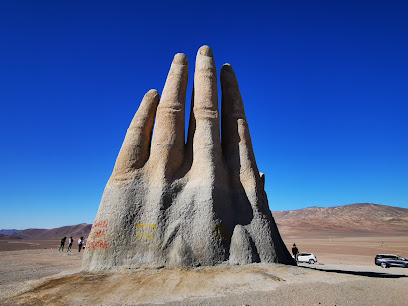
Mirador de Kari - Piedra del Coyote
Discover unparalleled views of the Atacama Desert at Mirador de Kari - Piedra del Coyote, a must-visit tourist attraction in San Pedro de Atacama.
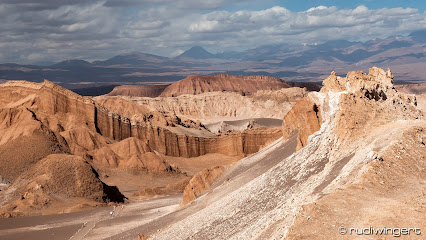
Laguna Chaxa Park
Explore the stunning landscapes and diverse wildlife of Laguna Chaxa Park in San Pedro de Atacama, a natural wonder in the Atacama Desert.
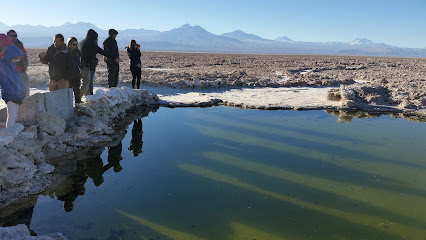
Pukará de Quitor
Explore Pukará de Quitor: a historic fortress in the Atacama Desert, showcasing ancient ruins and breathtaking landscapes near San Pedro de Atacama.
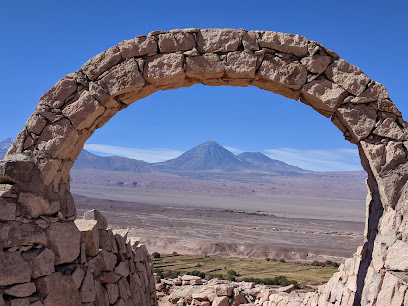
Meteorite Museum
Discover the fascinating universe of meteorites at the Meteorite Museum in San Pedro de Atacama - a must-visit for cosmic enthusiasts.

The three Marias Valley of the Moon
Explore the surreal landscapes of the Three Marias Valley of the Moon, a breathtaking tourist attraction in the Atacama Desert, Chile.
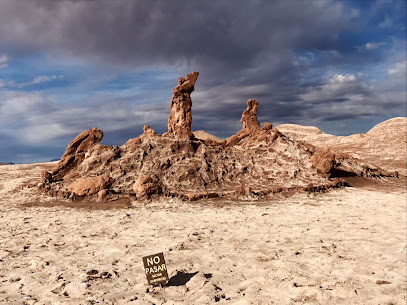
Valley of the Moon
Experience the otherworldly beauty of the Valley of the Moon in San Pedro de Atacama, Chile, where breathtaking landscapes and unique rock formations await.
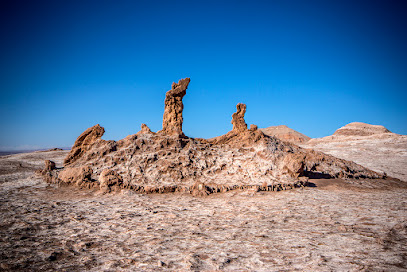
Atacama Desert
Discover the breathtaking landscapes of the Atacama Desert, a unique natural wonder known for its stunning beauty and diverse ecosystems.

Reserva Nacional Los Flamencos
Immerse yourself in the breathtaking landscapes and vibrant wildlife of Reserva Nacional Los Flamencos, a national reserve in Chile showcasing nature's grandeur.
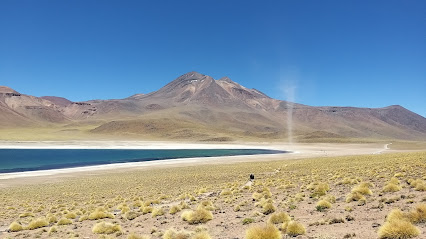
Lagunas Miscanti y Miñiques
Experience the breathtaking beauty of Lagunas Miscanti y Miñiques, where the Andes meet stunning turquoise lakes in the Atacama Desert.
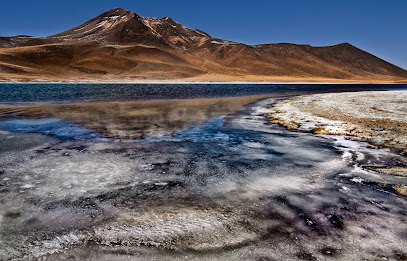
Moon Valley Amphitheater
Explore the surreal landscapes of Moon Valley Amphitheater, where stunning rock formations and breathtaking sunsets await in the Atacama Desert.
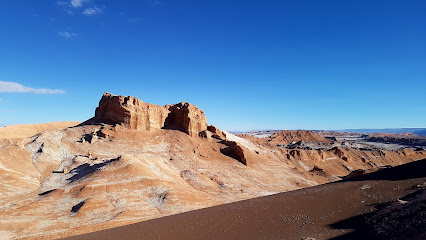
Duna Mayor
Experience the stunning beauty of Duna Mayor in Valle de la Luna, a must-visit destination in San Pedro de Atacama, Chile.
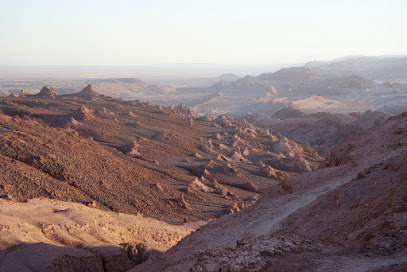
Centro de Información Valle de la Luna
Discover the surreal landscapes of Valle de la Luna at the Centro de Información in San Pedro de Atacama, a must-visit for nature enthusiasts and adventure seekers.

Tulor
Explore Tulor, an ancient archaeological site in San Pedro de Atacama, and immerse yourself in the rich history of the Atacameño civilization.
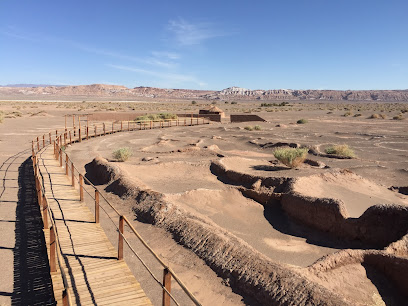
Laguna Chaxa
Experience the breathtaking beauty of Laguna Chaxa, a stunning salt lake in the Atacama Desert, rich in wildlife and spectacular landscapes.
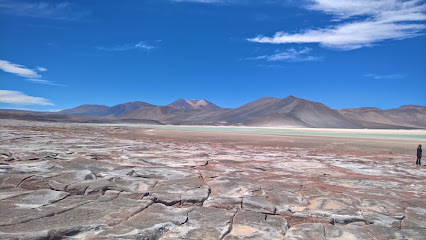
Unmissable attractions to see
Plaza de San Pedro de Atacama
Experience the vibrant heart of San Pedro de Atacama at Plaza de San Pedro, where local culture, food, and stunning landscapes converge.
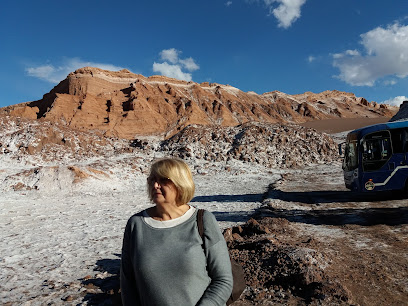
Pukará de Quitor
Discover the ancient fortress of Pukará de Quitor, a UNESCO World Heritage site that reveals the rich history of Chile's Atacama Desert.
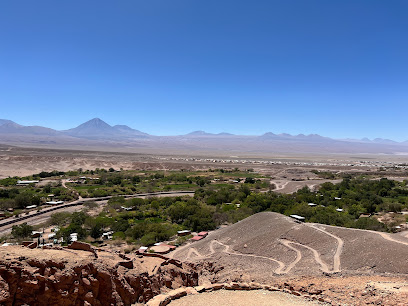
Meteorite Museum
Explore the Meteorite Museum in San Pedro de Atacama, a treasure trove of cosmic wonders and celestial artifacts waiting to be discovered.
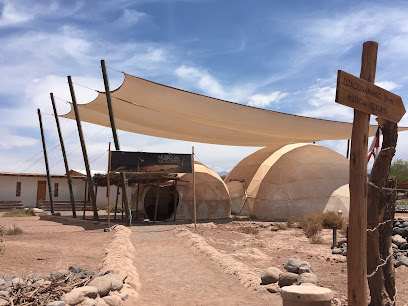
Valle del Arcoiris
Explore the breathtaking Valle del Arcoiris in San Pedro de Atacama, where vibrant landscapes and unique geological formations create nature's masterpiece.
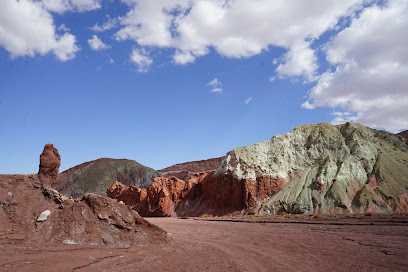
Mars Valley / Death Valley
Explore the breathtaking landscapes of Mars Valley in San Pedro de Atacama, where nature's beauty meets adventure in one of the world's most unique destinations.
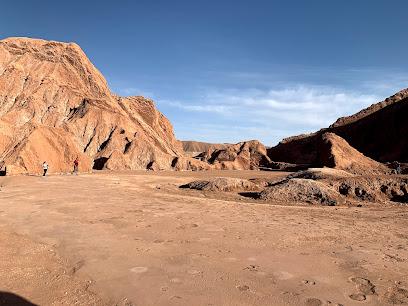
Magic Bus Atacama
Discover the enchanting Magic Bus Atacama in San Pedro, where stunning desert landscapes meet unique cultural experiences.
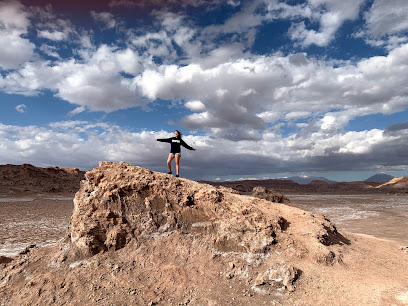
Centro de Información Valle de la Luna
Explore the stunning landscapes and unique geological formations at Centro de Información Valle de la Luna in the Atacama Desert, Chile.
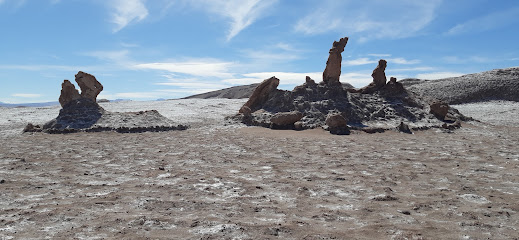
Devil's Throat
Discover the breathtaking beauty of Devil's Throat in San Pedro de Atacama, where nature's artistry meets dramatic landscapes and serene tranquility.
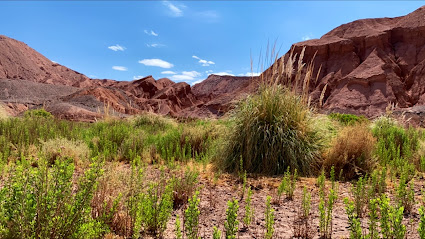
Tulor
Explore the ancient ruins of Tulor, an archaeological site that reveals the rich cultural heritage of the Atacameño people in the stunning Atacama Desert.
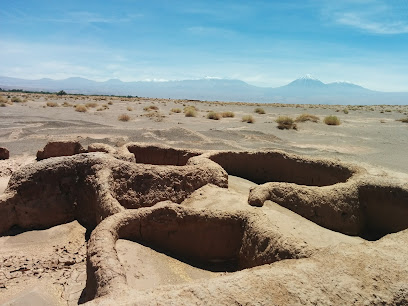
Mars Valley / Death Valley
Discover the stunning beauty of Mars Valley in Death Valley, where unique geological formations meet breathtaking desert landscapes.

Atacama Desert Stargazing
Explore the Atacama Desert's breathtaking stargazing opportunities, where the cosmos comes alive under one of the clearest skies on Earth.
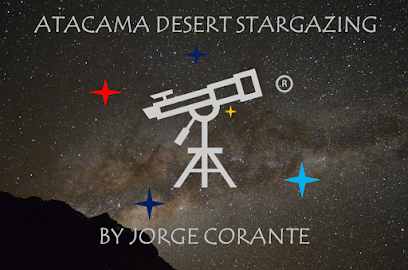
El Tunel
Discover the stunning rock formations and vibrant colors of El Tunel, a must-visit natural wonder in the Atacama Desert.
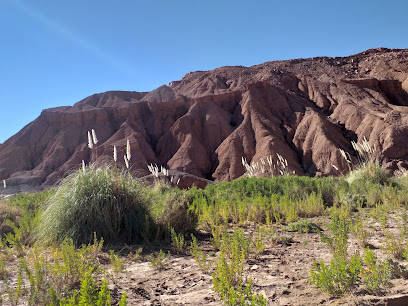
Cordillera traveller
Discover the enchanting beauty of the Atacama Desert with Cordillera Traveller's expert-guided sightseeing tours.
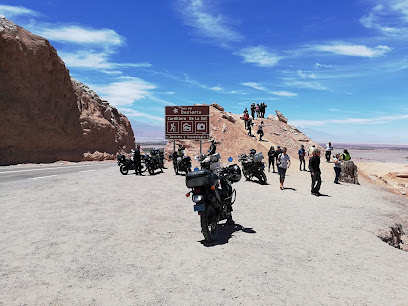
Llama Stargazing
Discover the beauty of the universe at Llama Stargazing, where the night sky comes alive with countless stars and cosmic wonders.
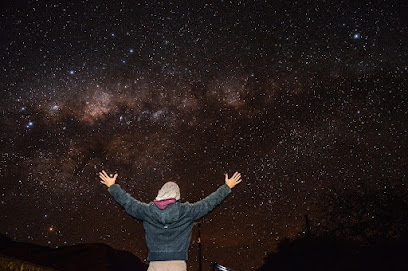
Rotonda de Sequitor
Experience the breathtaking views and rich culture at Rotonda de Sequitor in San Pedro de Atacama, a must-visit tourist attraction in the Atacama Desert.
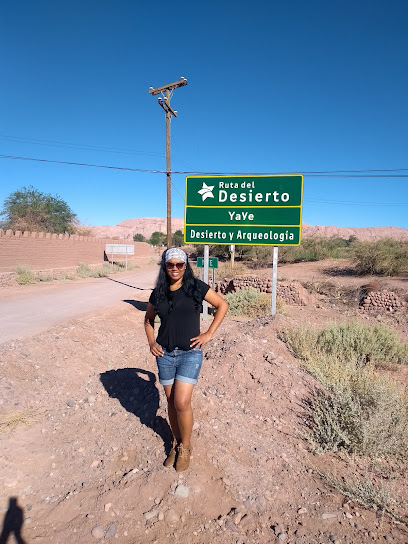
Essential places to dine
La Picada Del Indio
Experience authentic Chilean cuisine at La Picada Del Indio in San Pedro de Atacama - where every dish tells a story.
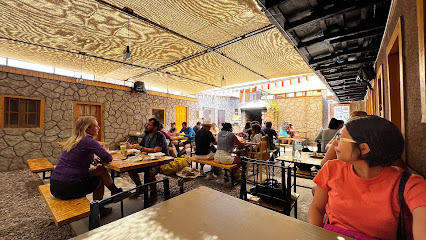
Barros Restaurante
Experience authentic Chilean cuisine at Barros Restaurante in San Pedro de Atacama – a culinary delight amidst breathtaking desert landscapes.
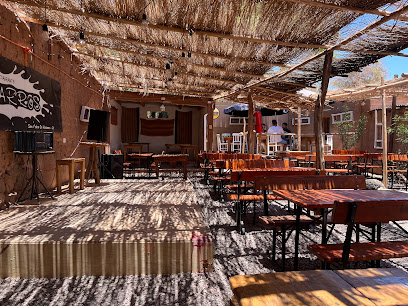
Mal de Puna
Discover authentic Chilean cuisine at Mal de Puna in San Pedro de Atacama - where tradition meets taste in a cozy setting.
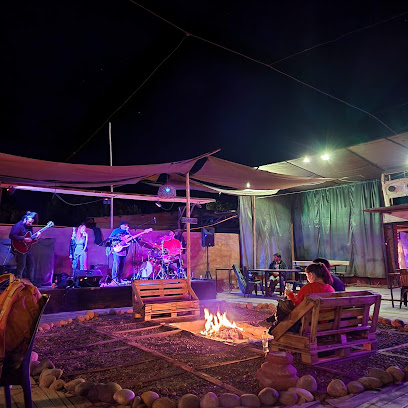
Pizzería El Charrúa
Discover authentic Italian pizza at Pizzería El Charrúa in San Pedro de Atacama - where every slice tells a story!
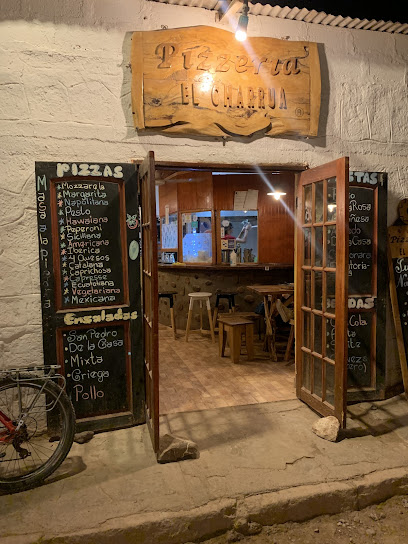
Sol Inti
Discover the flavors of Chile and Peru at Sol Inti in San Pedro de Atacama – where every meal is an unforgettable experience.
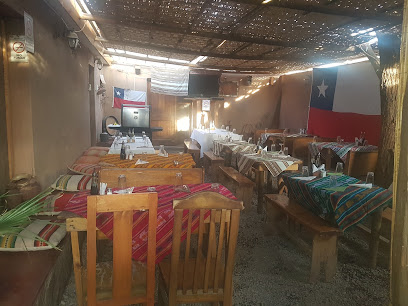
La Casona
Experience authentic Chilean cuisine at La Casona in San Pedro de Atacama – where tradition meets flavor in an inviting atmosphere.
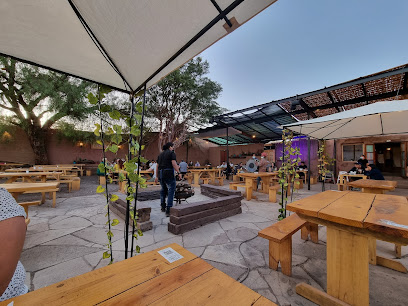
HUASCO TIERRA NOBLE
Discover Huasco Tierra Noble: A gastronomic gem in Atacama offering exquisite local flavors in a welcoming atmosphere.
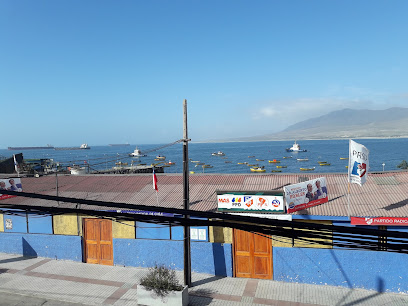
Jardin Meraki
Discover Jardin Meraki: A culinary gem in San Pedro de Atacama offering exquisite local flavors amidst breathtaking desert landscapes.
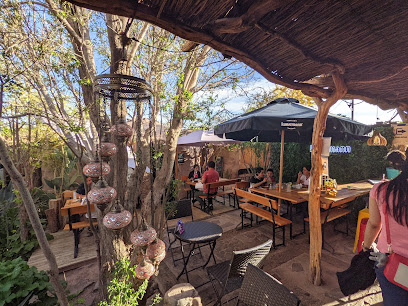
Ckunna
Discover authentic Chilean flavors at Ckunna in San Pedro de Atacama – where local ingredients meet traditional recipes.
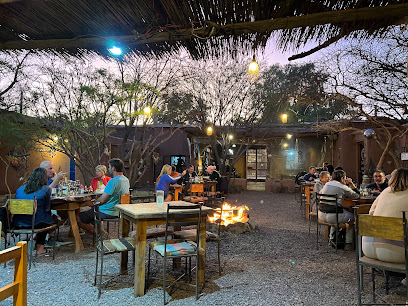
Ckunza Tilar
Experience authentic Chilean flavors at Ckunza Tilar in San Pedro de Atacama – where every meal tells a story.
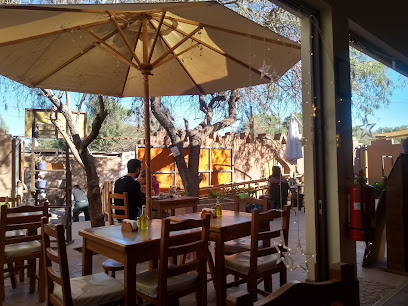
Baltinache Restaurant
Experience authentic Chilean cuisine at Baltinache Restaurant in San Pedro de Atacama - where flavors meet stunning desert views.
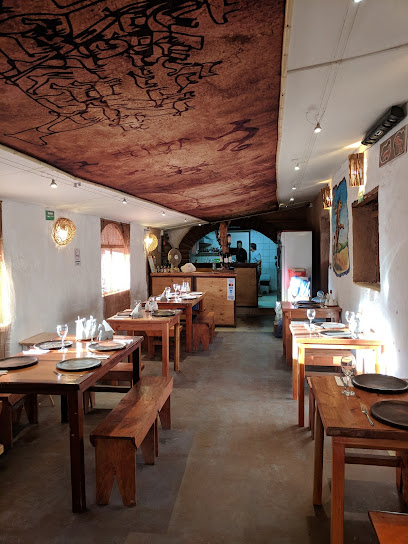
Aura Andina
Experience authentic Chilean cuisine at Aura Andina in San Pedro de Atacama – where every dish tells a story.
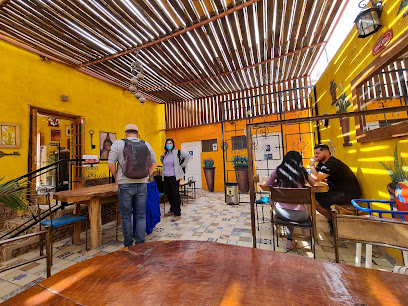
LA PICÁ DEL PERRÓN
Discover authentic Chilean flavors at La Picá del Perrón in San Pedro de Atacama - where every dish tells a story.
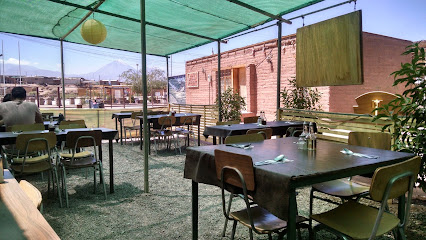
Rincón de Sal
Experience exquisite pizza and local brews at Rincón de Sal in San Pedro de Atacama – your go-to dining destination for flavor and fun.
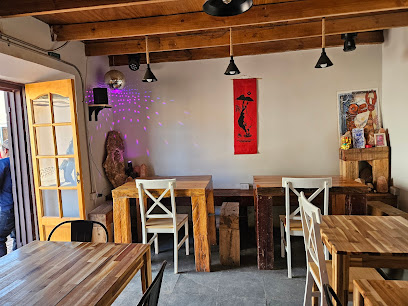
Restaurante Museo del Pisco
Discover culinary excellence at Restaurante Museo del Pisco in Vallenar - where tradition meets flavor in every bite.
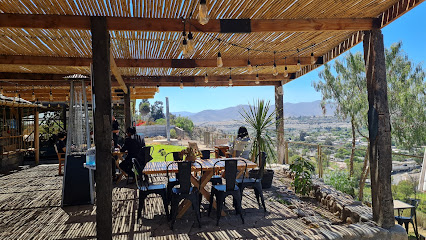
Markets, malls and hidden boutiques
Valley of the Moon
Discover the breathtaking landscapes and surreal beauty of the Valley of the Moon in Chile's Atacama Desert, a must-see for every traveler.

Valimport Supermarket
Discover Valimport Supermarket in San Pedro de Atacama for a local shopping experience rich in variety and convenience.
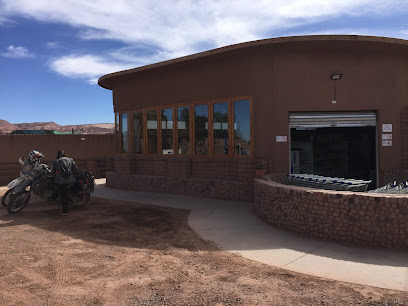
Feria Artesanal San Pedro de Atacama
Explore the enchanting Feria Artesanal San Pedro de Atacama, a vibrant marketplace showcasing the best of Chilean artisan culture and traditional crafts.
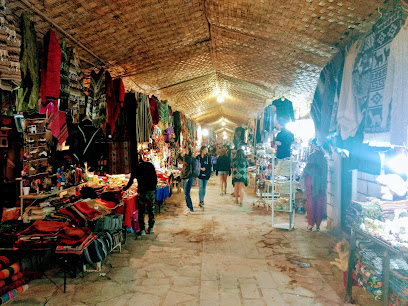
El Rincón del Viajero
Discover fashion and adventure essentials at El Rincón del Viajero, the ultimate clothing and camping store in San Pedro de Atacama.
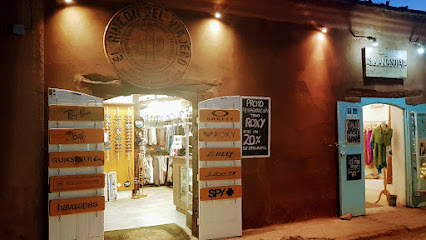
Las Salinas,
Discover the magical landscapes of Las Salinas in San Pedro de Atacama, where salt flats meet stunning views and vibrant local culture.
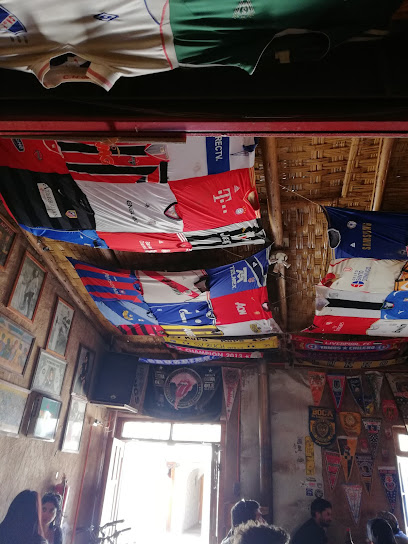
Rockford
Discover unique apparel and local culture at Rockford, a must-visit clothing store in San Pedro de Atacama, Chile.
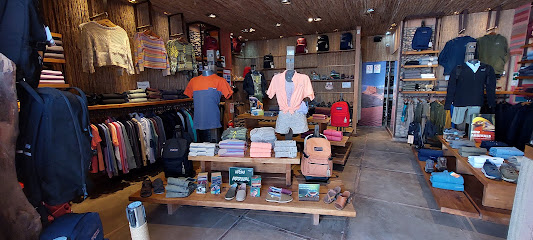
Chile Infinito
Explore the finest selection of Chilean wines at Chile Infinito in San Pedro de Atacama, a must-visit destination for wine lovers.
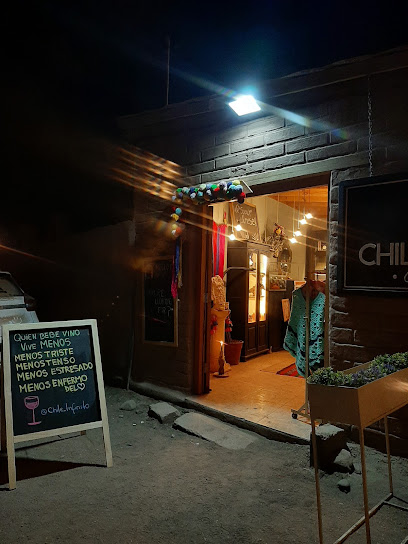
Caracoles 419d, San Pedro de Atacama
Experience the vibrant culture of San Pedro de Atacama through a unique shopping mall that offers traditional crafts and local delicacies.
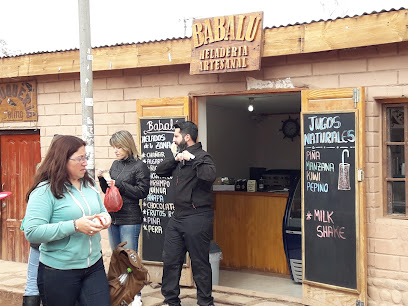
Piedras Australes
Explore exquisite handcrafted jewelry that captures the essence of Atacama's culture at Piedras Australes in San Pedro de Atacama.
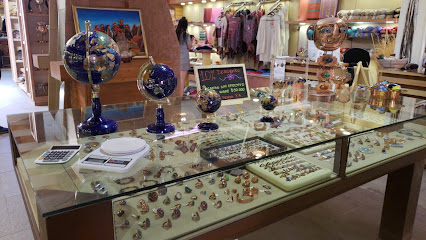
El Telar
Discover the essence of San Pedro de Atacama with unique handicrafts and local wines at El Telar, a charming souvenir store.

Puro Cobre
Discover exquisite handcrafted jewelry at Puro Cobre in San Pedro de Atacama, showcasing the region's rich cultural artistry.
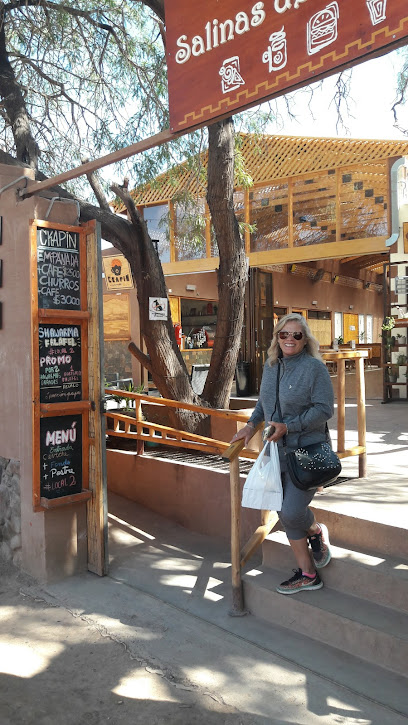
Raza
Discover the essence of Atacama at Raza, where authentic local crafts and vibrant artistry await your exploration.
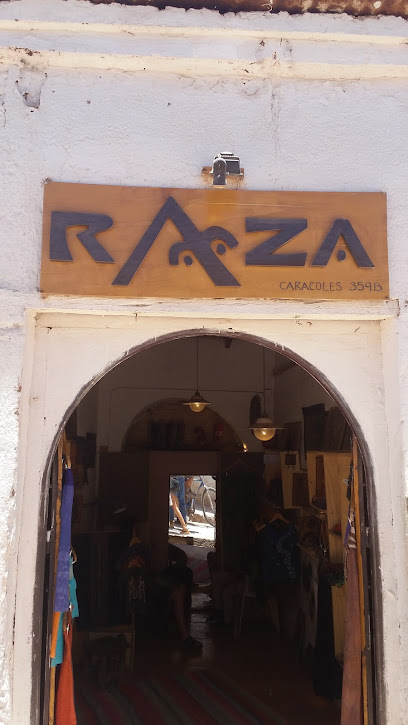
EL TELAR
Discover unique handcrafted souvenirs in San Pedro de Atacama at El Telar, where local artistry meets warm hospitality.

Artesanías Santa Ana
Discover the vibrant artistry of Atacama at Artesanías Santa Ana, where every handcrafted item tells a unique story.
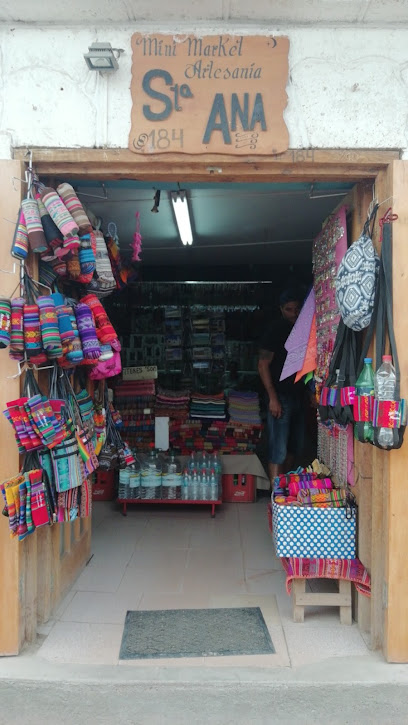
Amaru Artesanias
Discover the essence of Atacama at Amaru Artesanias, where local craftsmanship meets vibrant culture in unique clothing and artisan products.
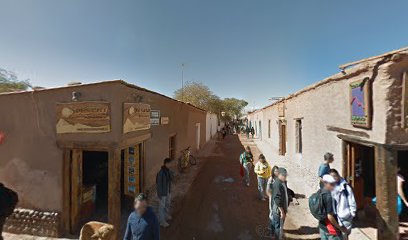
Essential bars & hidden hideouts
Mal de Puna
Discover the vibrant flavors of Chilean cuisine at Mal de Puna, a charming restaurant in San Pedro de Atacama.
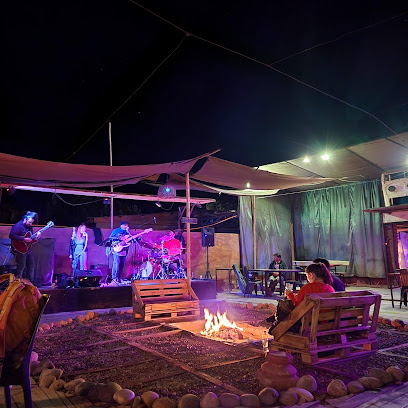
Lola's
Discover the flavors of San Pedro de Atacama at Lola's, where local ingredients meet warm hospitality in a charming setting.
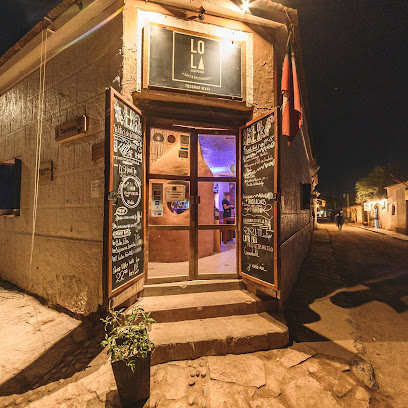
ChelaCabur
Discover the lively spirit of ChelaCabur in San Pedro de Atacama, where great drinks and vibrant atmosphere meet local culture.
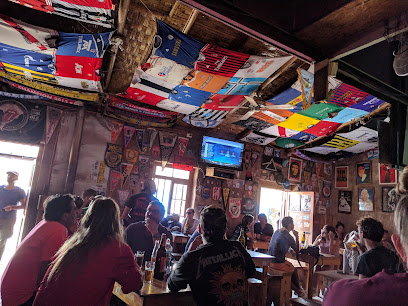
Roots Cafe Pizza
Experience the vibrant flavors of Roots Cafe Pizza in San Pedro de Atacama, where local ingredients meet culinary creativity in a cozy atmosphere.
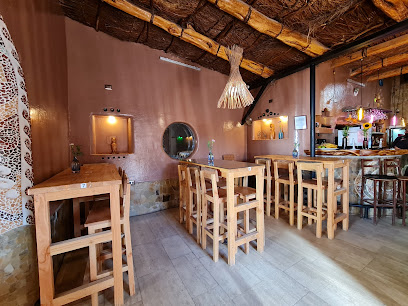
El Toconar
Experience authentic Chilean flavors at El Toconar, a lively gastropub in the heart of San Pedro de Atacama, where culinary delights await.
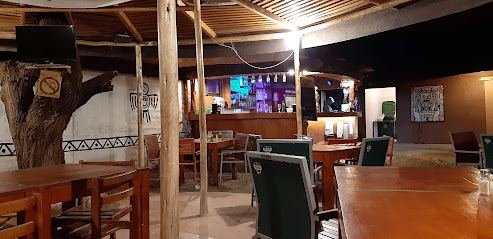
Cervecería St. Peter
Experience the vibrant flavors of San Pedro de Atacama at Cervecería St. Peter, a cozy brewpub offering artisanal beers and local dishes.
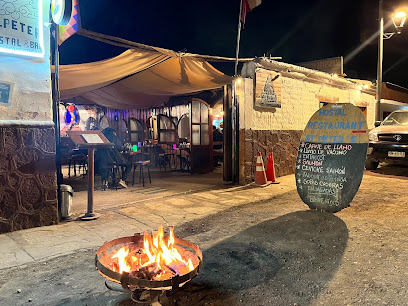
Karaván Restobar
Experience the best of local cuisine and vibrant nightlife at Karaván Restobar in San Pedro de Atacama, where exceptional flavors meet a lively atmosphere.
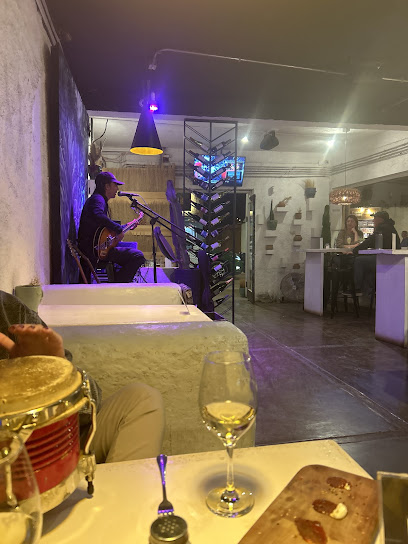
Los Gor2
Experience the vibrant flavors of Chilean cuisine at Los Gor2 in San Pedro de Atacama, where every dish tells a story.
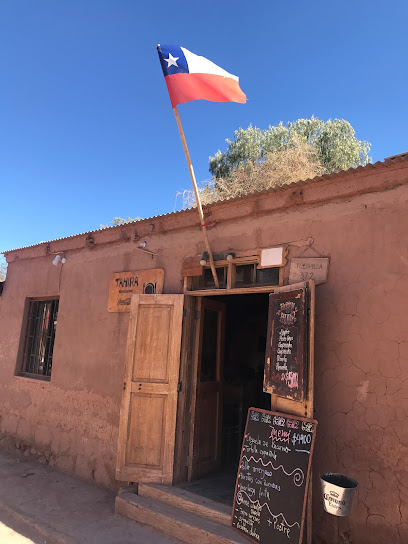
Aura Andina
Experience the rich flavors of Chilean cuisine at Aura Andina, a culinary gem in San Pedro de Atacama.
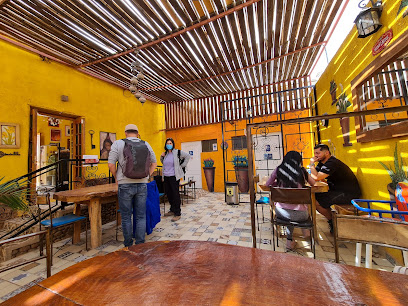
Kankas
Experience the vibrant flavors of Chile at Kankas, a top gastropub in San Pedro de Atacama, blending tradition with modern culinary artistry.
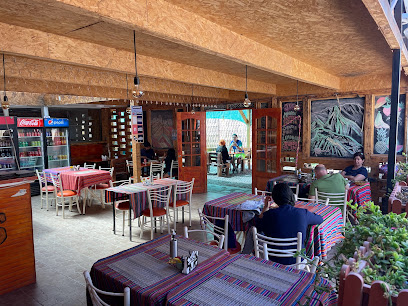
Restaurante Bar Agua Loca
Discover authentic Chilean cuisine at Restaurante Bar Agua Loca in San Pedro de Atacama, where flavor meets culture in a vibrant setting.
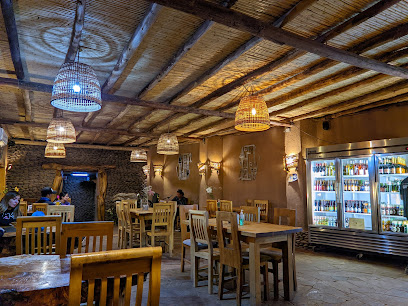
Perrock
Experience the vibrant flavors of San Pedro de Atacama at Perrock, a gastropub offering innovative dishes and a lively atmosphere.
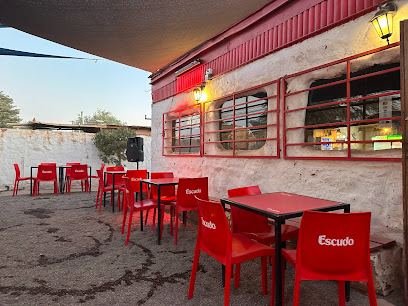
REDSTONS food-cocktails-pizzas italianas
Experience the best of Italian gastronomy in San Pedro de Atacama at REDSTONS, where every pizza is a masterpiece.
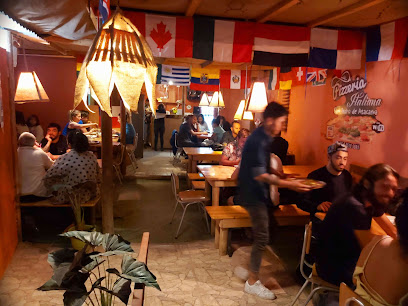
San pedro de atacama
Explore the breathtaking landscapes and rich culture of San Pedro de Atacama, a desert oasis unlike any other in Chile.
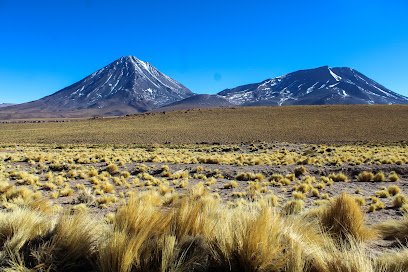
Volkanico SmokeHouse
Discover the flavors of Chilean cuisine at Volkanico SmokeHouse in San Pedro de Atacama, where smoky delights meet local traditions.
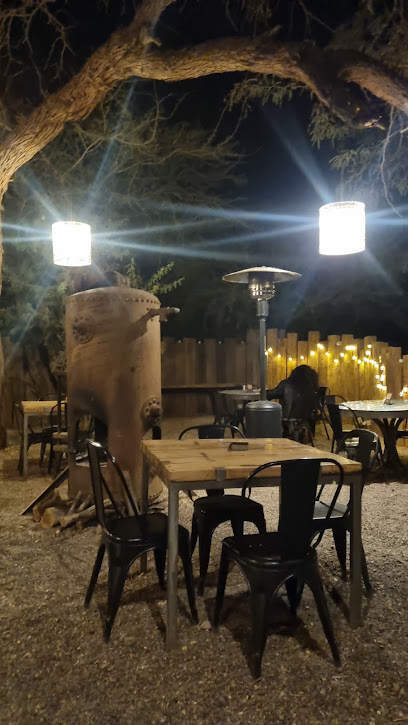
Local Phrases about Valle de la Luna
-
- HelloHola
[Oh-la] - GoodbyeAdiós
[Ah-dee-ohs] - YesSí
[See] - NoNo
[Noh] - Please/You're welcomePor favor/De nada
[Por fah-vor/Deh nah-dah] - Thank youGracias
[Grah-see-ahs] - Excuse me/SorryPerdón
[Pair-dohn] - How are you?¿Cómo estás?
[Koh-moh ehs-tahs] - Fine. And you?Bien. ¿Y tú?
[Byen. Ee too] - Do you speak English?¿Hablas inglés?
[Ah-blahs een-glays] - I don't understandNo entiendo
[Noh ehn-tee-ehn-doh]
- HelloHola
-
- I'd like to see the menu, pleaseMe gustaría ver el menú, por favor
[May goos-tah-ree-ah vehr ehl meh-noo, poor fah-vor] - I don't eat meatNo como carne
[Noh koh-moh kahr-neh] - Cheers!¡Salud!
[Sah-lood] - I would like to pay, pleaseMe gustaría pagar, por favor
[May goos-tah-ree-ah pah-gar, poor fah-vor]
- I'd like to see the menu, pleaseMe gustaría ver el menú, por favor
-
- Help!¡Ayuda!
[Ah-yoo-dah] - Go away!¡Vete!
[Veh-teh] - Call the Police!¡Llama a la Policía!
[Yah-mah ah lah Poh-lee-see-ah] - Call a doctor!¡Llama a un doctor!
[Yah-mah ah oon dohk-tohr] - I'm lostEstoy perdido/a
[Ehs-toy pair-dee-doh/ah] - I'm illEstoy enfermo/a
[Ehs-toy ehn-fehr-moh/ah]
- Help!¡Ayuda!
-
- I'd like to buy...Me gustaría comprar...
[May goos-tah-ree-ah kohm-prahr] - I'm just lookingSolo estoy mirando
[Soh-loh ehs-toy mee-rahn-doh] - How much is it?¿Cuánto cuesta?
[Kwan-to kway-stah] - That's too expensiveEso es demasiado caro
[Eh-soh ehs deh-mah-see-ah-doh kah-roh] - Can you lower the price?¿Puede bajar el precio?
[Pweh-deh bah-har ehl pree-syoh]
- I'd like to buy...Me gustaría comprar...
-
- What time is it?¿Qué hora es?
[Keh oh-rah ehs] - It's one o'clockEs la una
[Ehs lah oo-nah] - Half past (10)Las diez y media
[Lahs dee-ehs ee meh-dee-ah] - MorningMañana
[Mah-nyah-nah] - AfternoonTarde
[Tahr-deh] - EveningNoche
[Noh-cheh] - YesterdayAyer
[Ah-yehr] - TodayHoy
[Oy] - TomorrowMañana
[Mah-nyah-nah] - 1Uno
[Oo-noh] - 2Dos
[Dohs] - 3Tres
[Tres] - 4Cuatro
[Kwah-troh] - 5Cinco
[Seen-koh] - 6Seis
[Sayz] - 7Siete
[Syeh-teh] - 8Ocho
[Oh-choh] - 9Nueve
[Nweh-veh] - 10Diez
[Dee-ehs]
- What time is it?¿Qué hora es?
-
- Where's a/the...?¿Dónde está...?
[Dohn-deh ehs-tah] - What's the address?¿Cuál es la dirección?
[Kwahl ehs lah dee-rehk-syohn] - Can you show me (on the map)?¿Puedes mostrarme (en el mapa)?
[Pweh-dehs mohs-trar-meh (ehn ehl mah-pah)] - When's the next (bus)?¿Cuándo es el próximo (autobús)?
[Kwan-doh ehs ehl proh-ksee-moh (ow-toh-boos)] - A ticket (to ....)Un boleto (a ...)
[Oon boh-leh-toh (ah ...)]
- Where's a/the...?¿Dónde está...?
History of Valle de la Luna
-
Valle de la Luna, or Valley of the Moon, is a stunning landscape formed over millions of years. The valley's unique topography is the result of a combination of geological processes, including the erosion of sand and stone by wind and water. The salt formations, rugged mountains, and vast dunes give the area its lunar-like appearance, making it one of the most iconic landscapes in the Atacama Desert.
-
Long before modern explorers, the region was inhabited by the Atacameño people, also known as the Lickan Antay. Archaeological evidence suggests that these indigenous people have lived in the Atacama Desert for thousands of years. They adapted to the harsh environment, developing unique agricultural practices and a deep spiritual connection to the land. Artifacts such as petroglyphs and ancient tools provide a glimpse into their way of life.
-
In the mid-16th century, Spanish conquistador Pedro de Valdivia led an expedition through the Atacama Desert, including Valle de la Luna. His quest to conquer Chile for the Spanish Crown brought him face-to-face with the harsh realities of the desert. Despite the inhospitable environment, Valdivia's journey marked the beginning of Spanish influence in the region.
-
In the 20th and 21st centuries, Valle de la Luna has become a focal point for scientific research. Its extreme aridity and unique geological features make it an excellent analogue for the surface of Mars. Scientists and researchers from around the world come to study the valley, contributing to our understanding of planetary geology and the potential for life on Mars.
-
Valle de la Luna is not only a natural wonder but also a cultural treasure. The valley is a symbol of the resilience and ingenuity of the Atacameño people. It is celebrated in local folklore, music, and art, reflecting the deep connection between the land and its inhabitants. Festivals and rituals often take place in the valley, honoring the spirits and natural forces that have shaped the region.
-
In recent decades, Valle de la Luna has become a popular destination for tourists from around the globe. The area's otherworldly landscapes attract photographers, adventurers, and nature enthusiasts. Sustainable tourism initiatives have been implemented to protect the delicate environment while allowing visitors to experience the valley's beauty. Local guides offer insightful tours, sharing the rich history and cultural heritage of the region.
Valle de la Luna Essentials
-
Valle de la Luna is located in the Atacama Desert, near the town of San Pedro de Atacama in northern Chile. The closest major airport is El Loa Airport (CJC) in Calama, approximately 100 kilometers from San Pedro de Atacama. From the airport, you can take a bus or taxi to San Pedro de Atacama, a journey that typically takes around 1.5 to 2 hours. Alternatively, you can rent a car at the airport for a more flexible travel experience.
-
Once in San Pedro de Atacama, you can explore Valle de la Luna using various options. Many tourists prefer to join guided tours that include transportation. Alternatively, renting a bike or car is a popular choice for those who wish to explore at their own pace. Local buses and taxis are also available, but their schedules can be infrequent. Walking is feasible for shorter distances, but due to the harsh desert conditions, it's advisable to use motorized transport for longer trips.
-
The official currency in Chile is the Chilean Peso (CLP). Most businesses in San Pedro de Atacama accept credit cards, but it's advisable to carry cash for small purchases and in case of connectivity issues. ATMs are available in San Pedro de Atacama, but they can sometimes run out of cash, so it's a good idea to withdraw sufficient funds in larger cities before arriving.
-
Valle de la Luna and San Pedro de Atacama are generally safe destinations for tourists. However, it's important to take standard precautions. Avoid walking alone at night in isolated areas and always keep an eye on your belongings. While there are no specific high-crime areas targeting tourists, staying vigilant and aware of your surroundings is always recommended.
-
In case of emergency, dial 133 for police assistance, 131 for medical emergencies, and 132 for fire emergencies. San Pedro de Atacama has a small medical clinic for minor issues, but serious medical conditions may require a trip to a larger hospital in Calama. It's strongly recommended to have travel insurance that covers medical emergencies. Pharmacies in San Pedro de Atacama can provide over-the-counter medications.
-
Fashion: Do wear comfortable and breathable clothing suitable for the desert climate. Don't forget to bring a hat, sunglasses, and sunscreen. Religion: Do respect local customs. Although there are no strict religious dress codes, modesty is appreciated in town. Public Transport: Do be punctual and respectful when using public transport. Don't expect buses and taxis to always be on schedule. Greetings: Do greet people with a friendly 'Hola' or 'Buenos días.' A handshake is a common form of greeting. Eating & Drinking: Do try local foods and drink plenty of water to stay hydrated. Don't drink tap water; always opt for bottled water.
-
To experience Valle de la Luna like a local, visit during the early morning or late afternoon to avoid the intense midday heat and to capture the best lighting for photographs. Engage with local guides who can provide in-depth knowledge about the area's history and geology. Don't miss the opportunity to stargaze; the Atacama Desert is famous for its clear skies and astronomical observatories. Visiting local markets in San Pedro de Atacama can provide a more authentic experience and the chance to purchase unique handcrafted souvenirs.
Trending Landmarks in Valle de la Luna
-
Hand of the Desert
-
Mirador de Kari - Piedra del Coyote
-
Laguna Chaxa Park
-
Pukará de Quitor
-
Meteorite Museum
-
The three Marias Valley of the Moon
-
Valley of the Moon
-
Atacama Desert
-
Reserva Nacional Los Flamencos
-
Lagunas Miscanti y Miñiques
-
Moon Valley Amphitheater
-
Duna Mayor
-
Centro de Información Valle de la Luna
-
Tulor
-
Laguna Chaxa
Nearby Cities to Valle de la Luna
-
Things To Do in Antofagasta
-
Things To Do in Uyuni
-
Things To Do in Iquique
-
Things To Do in Salta
-
Things To Do in Tarija
-
Things To Do in Potosi
-
Things To Do in San Miguel de Tucumán
-
Things To Do in Sucre
-
Things To Do in Arica
-
Things To Do in Tacna
-
Things To Do in Cochabamba
-
Things To Do in La Paz
-
Things To Do in Copacabana
-
Things To Do in Santa Cruz de la Sierra
-
Things To Do in Arequipa









